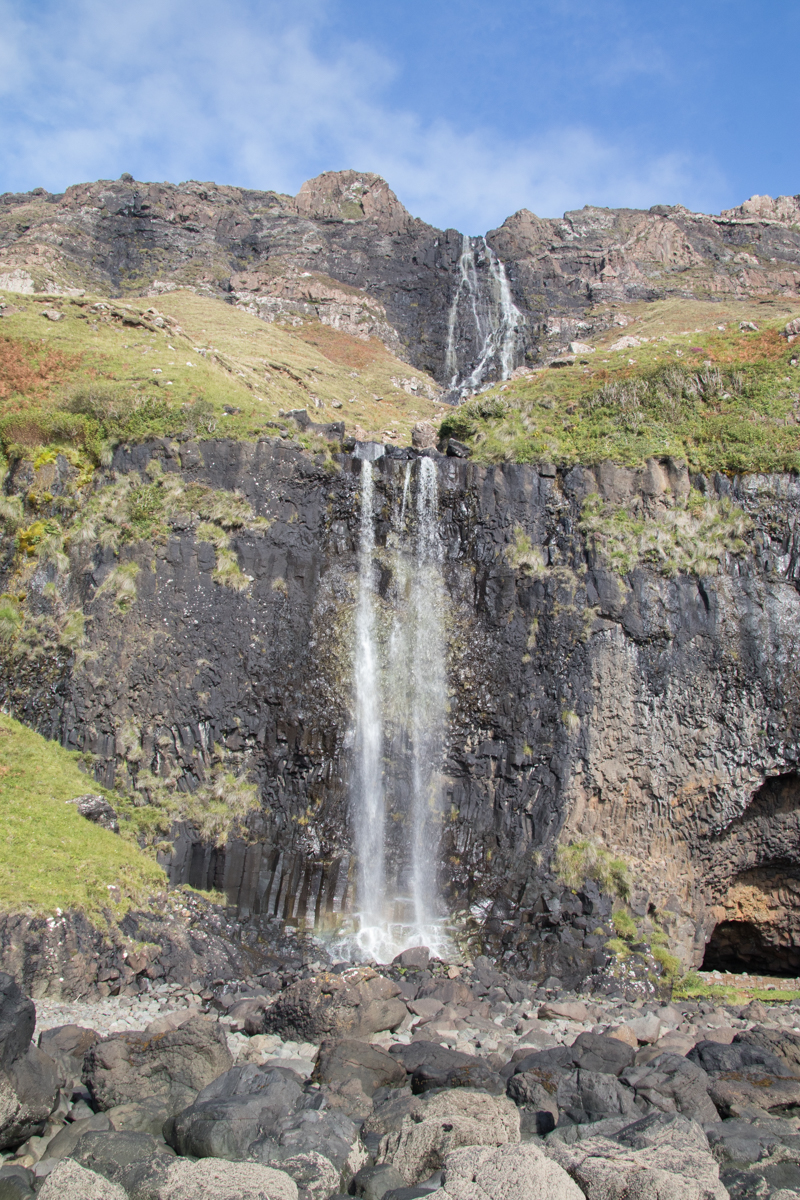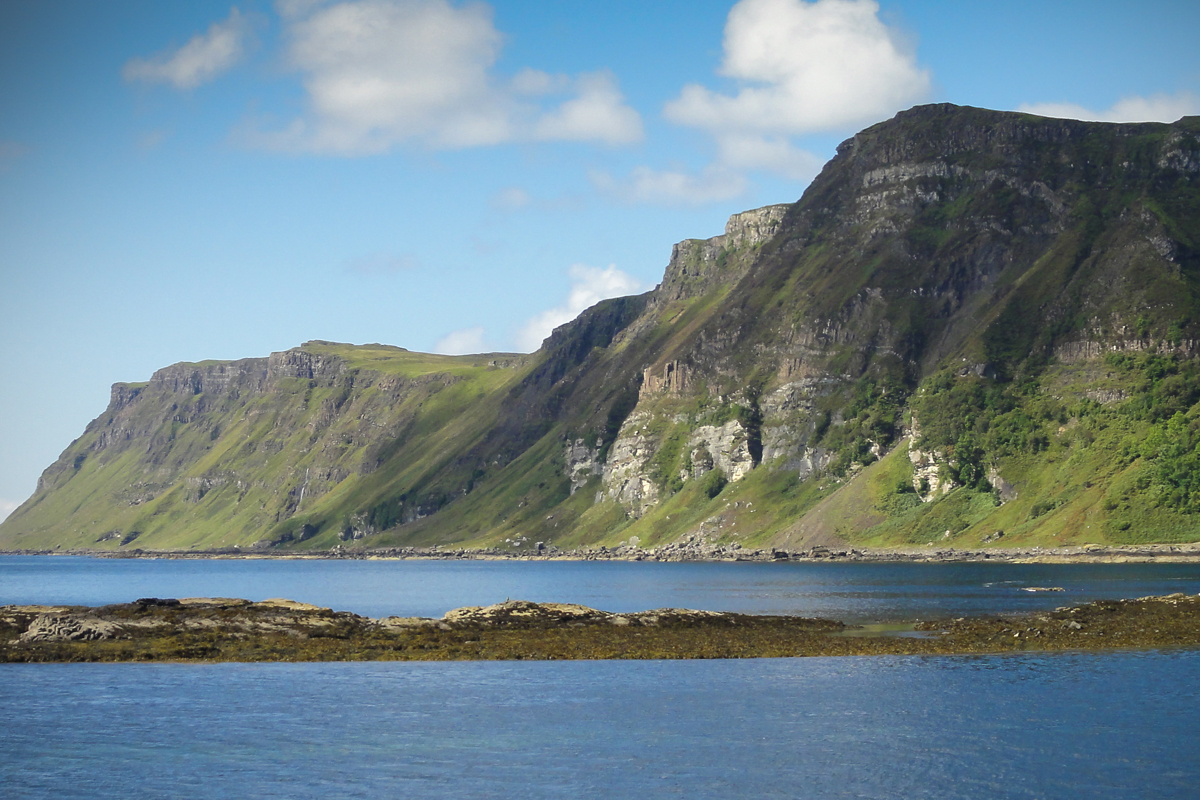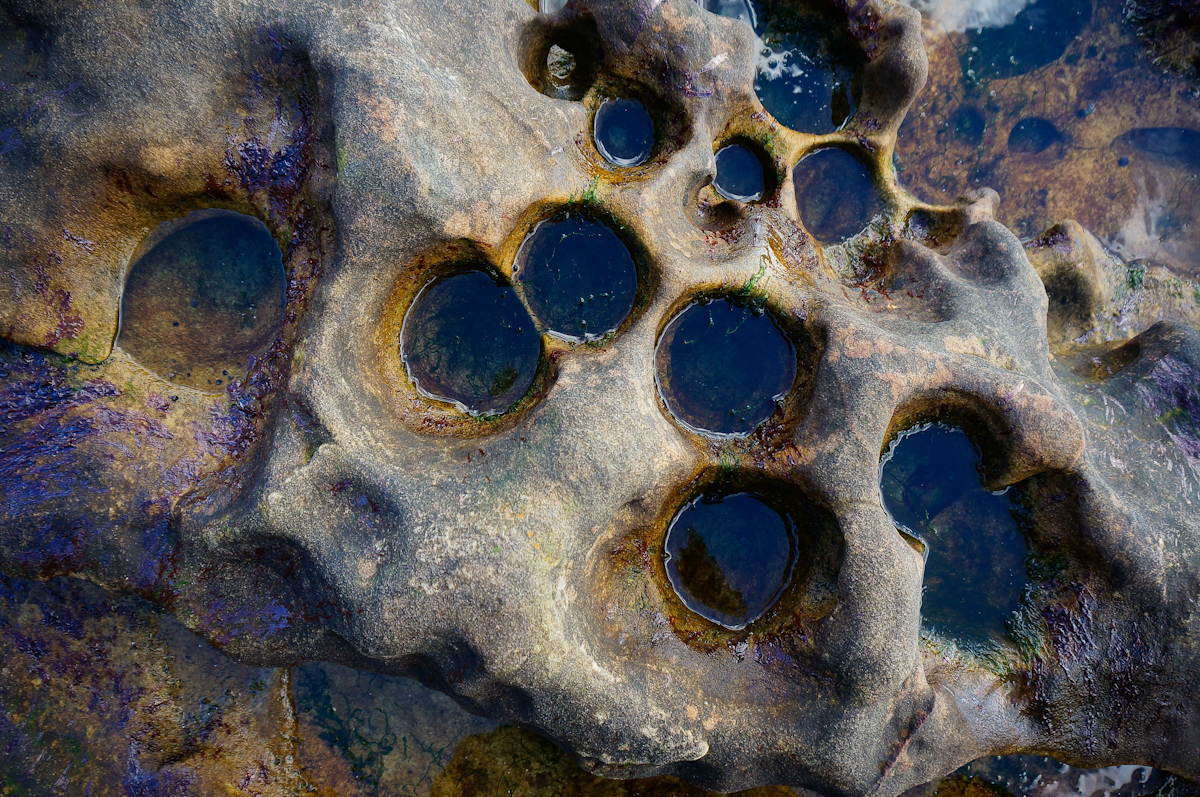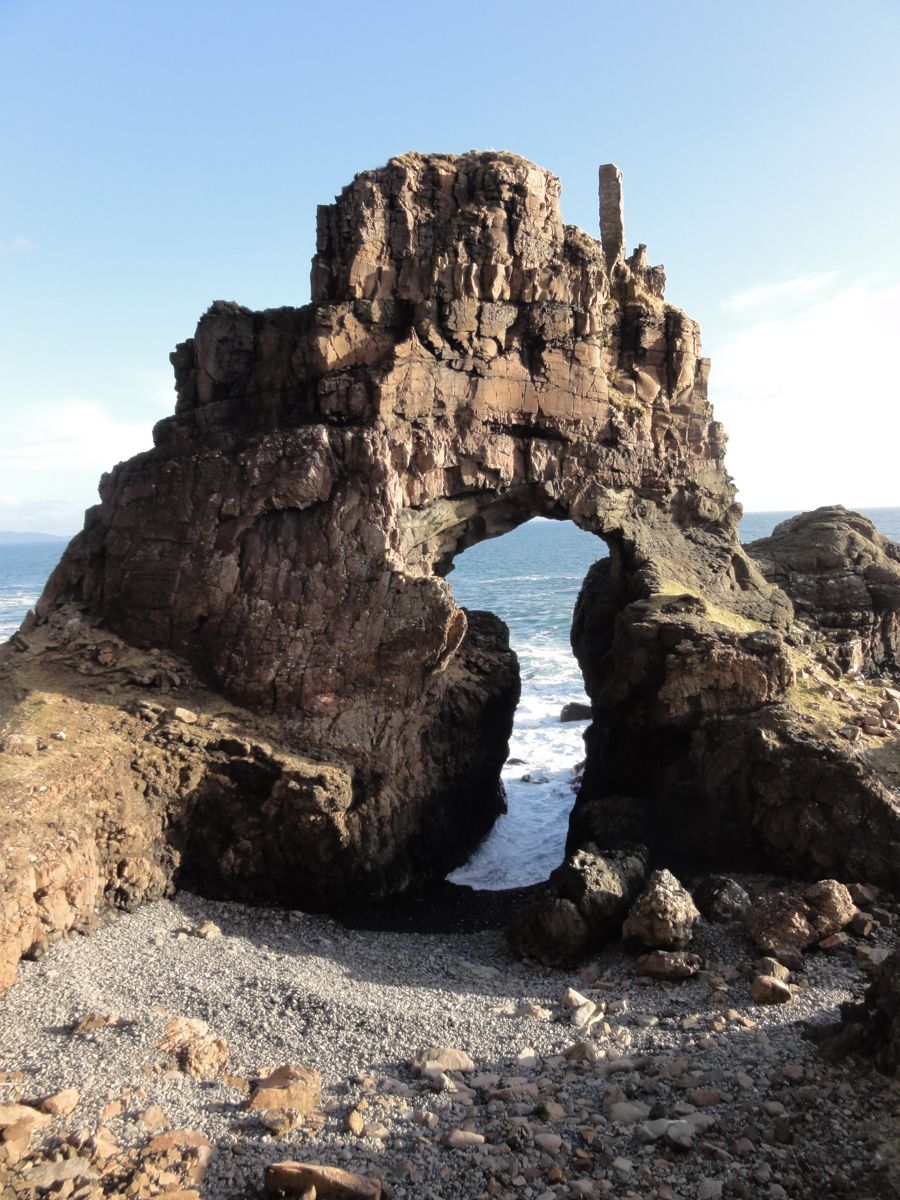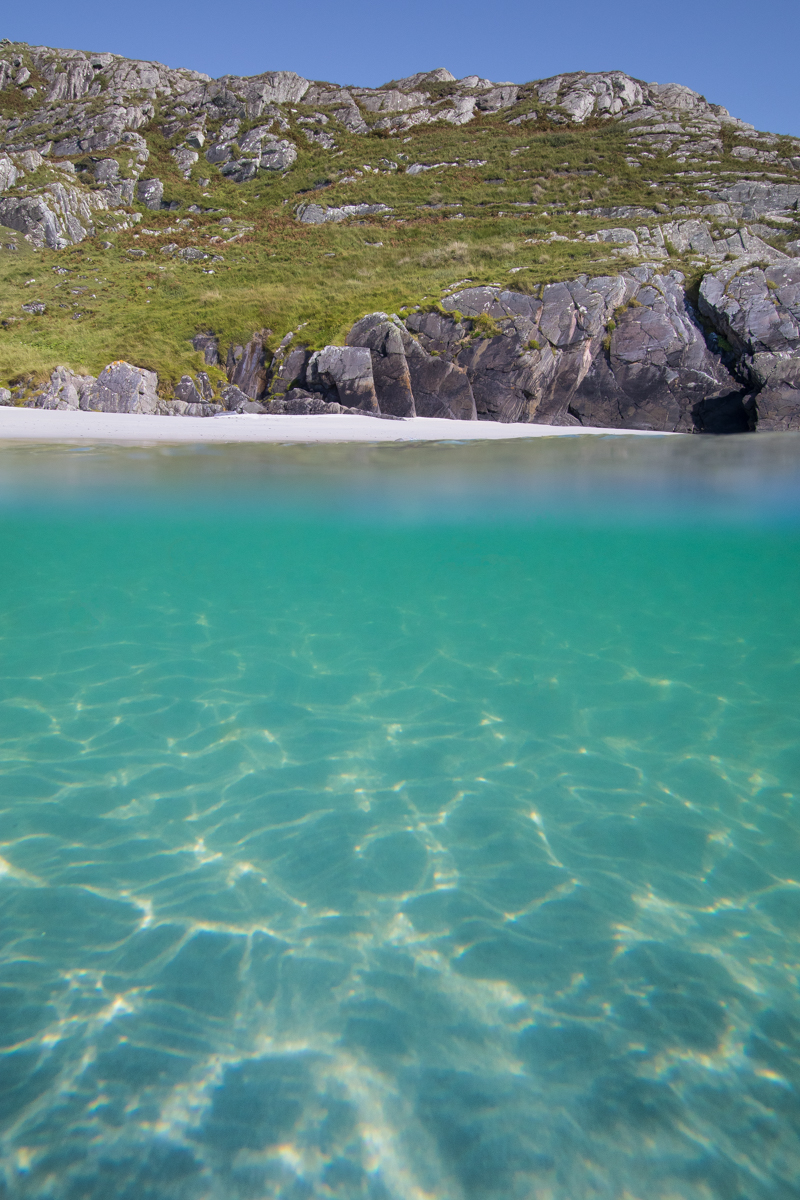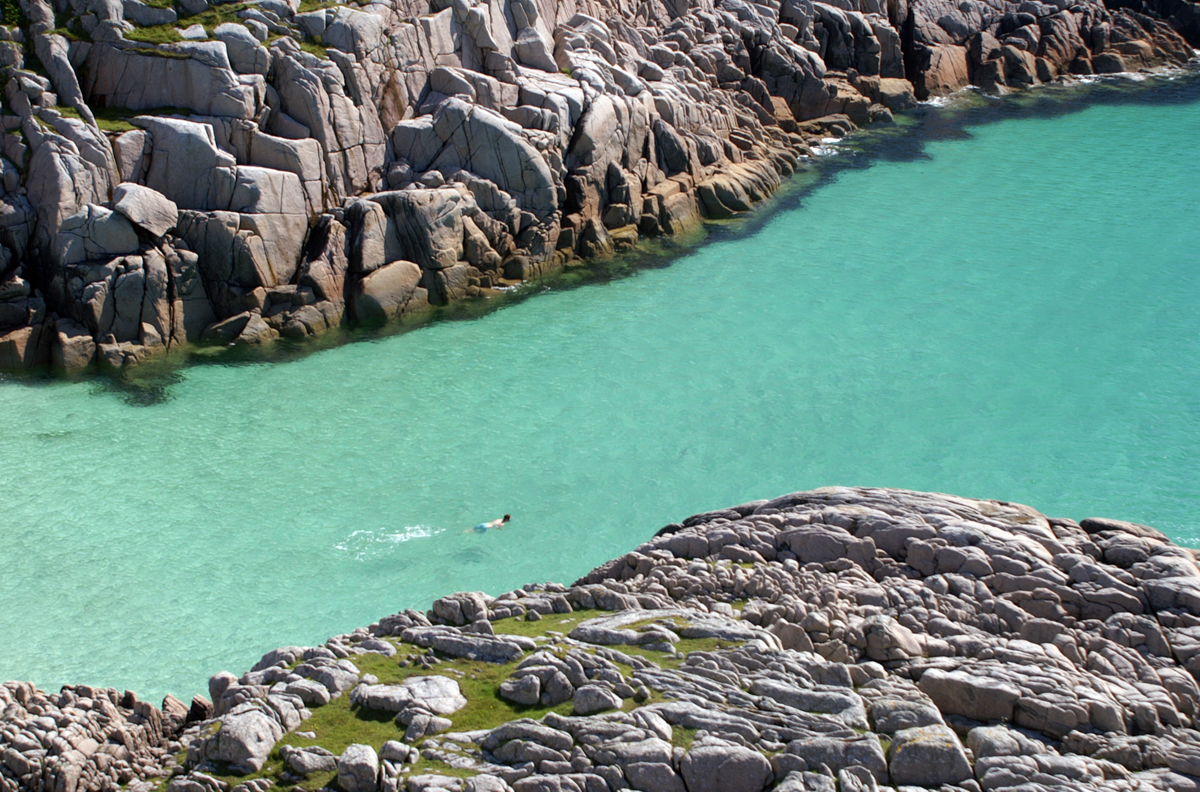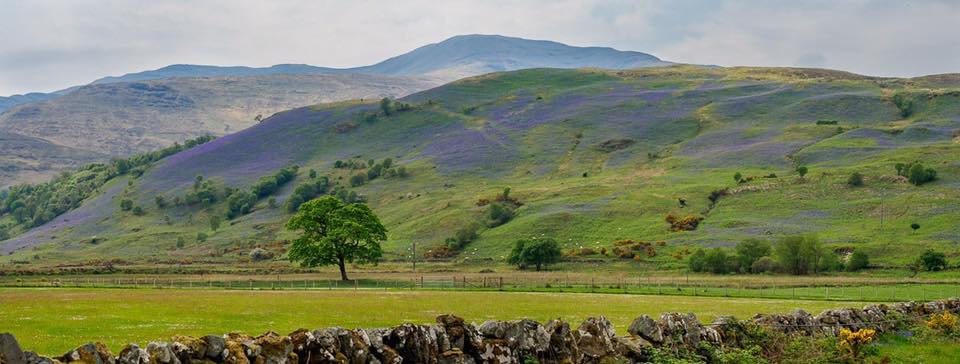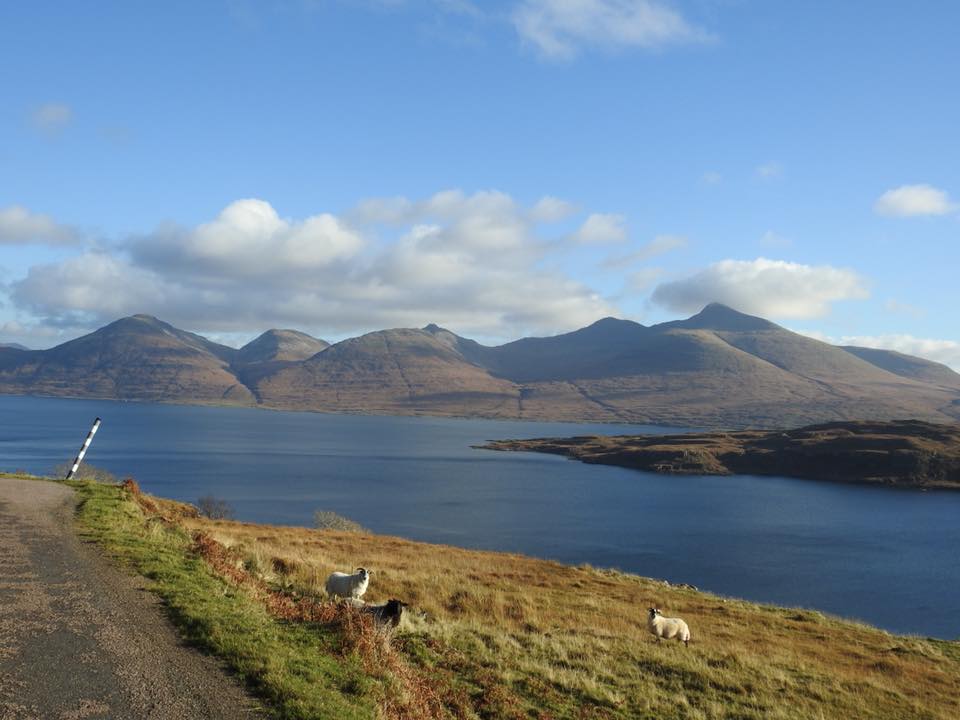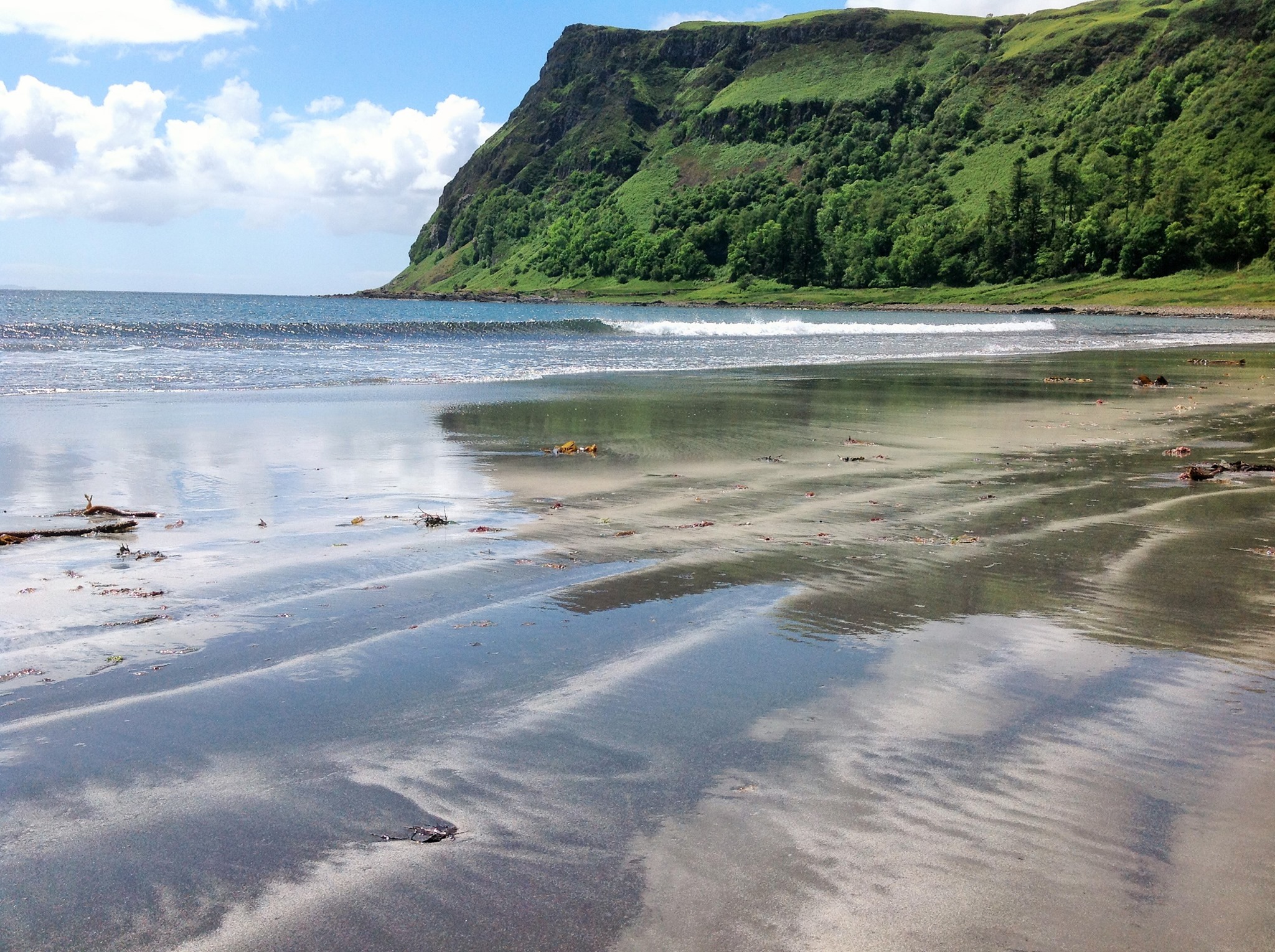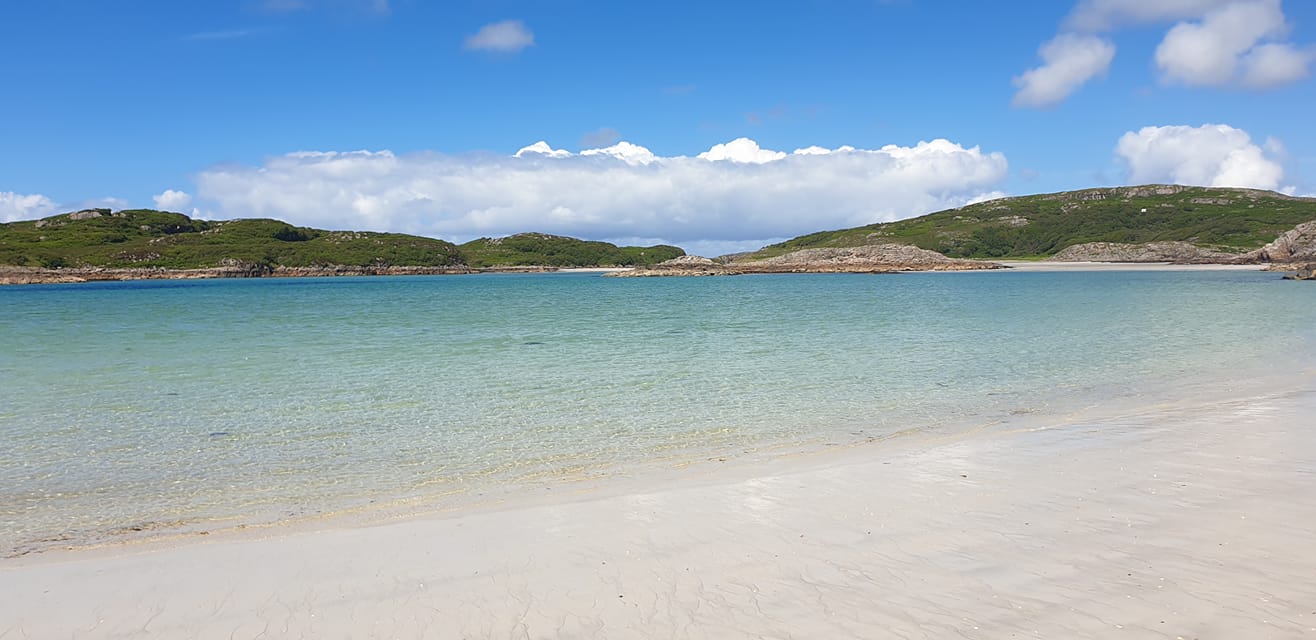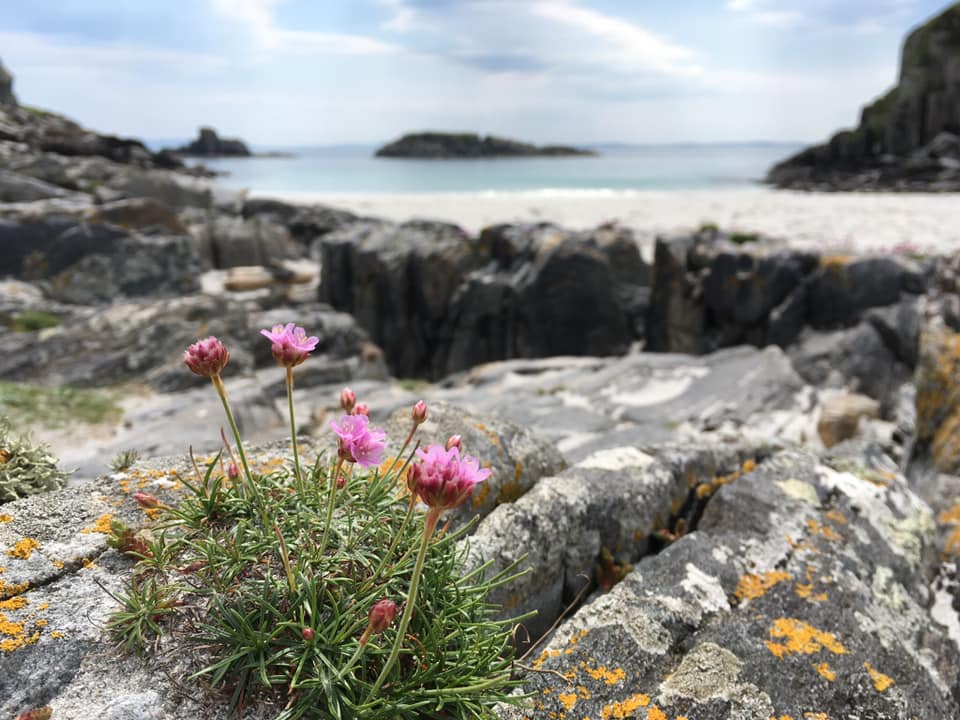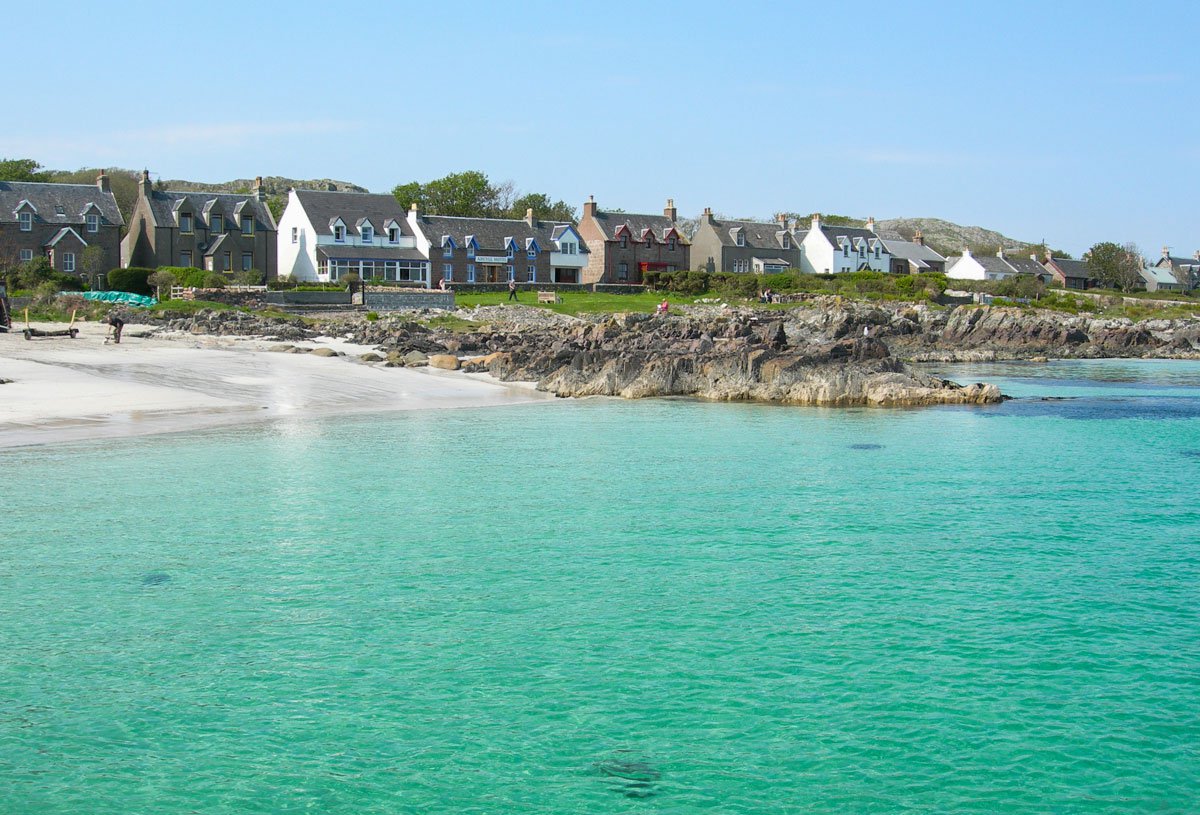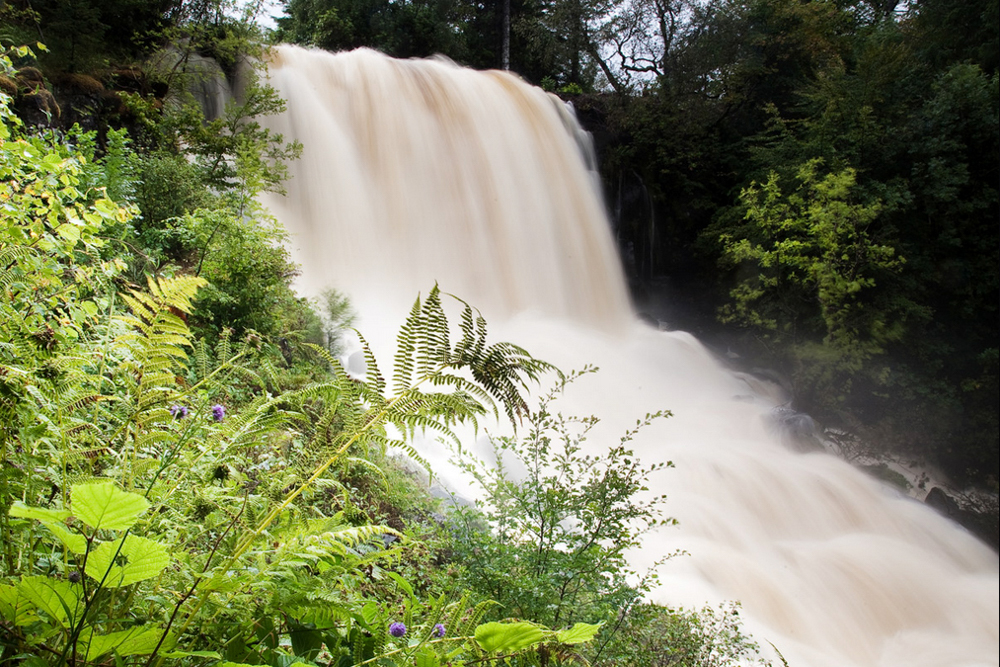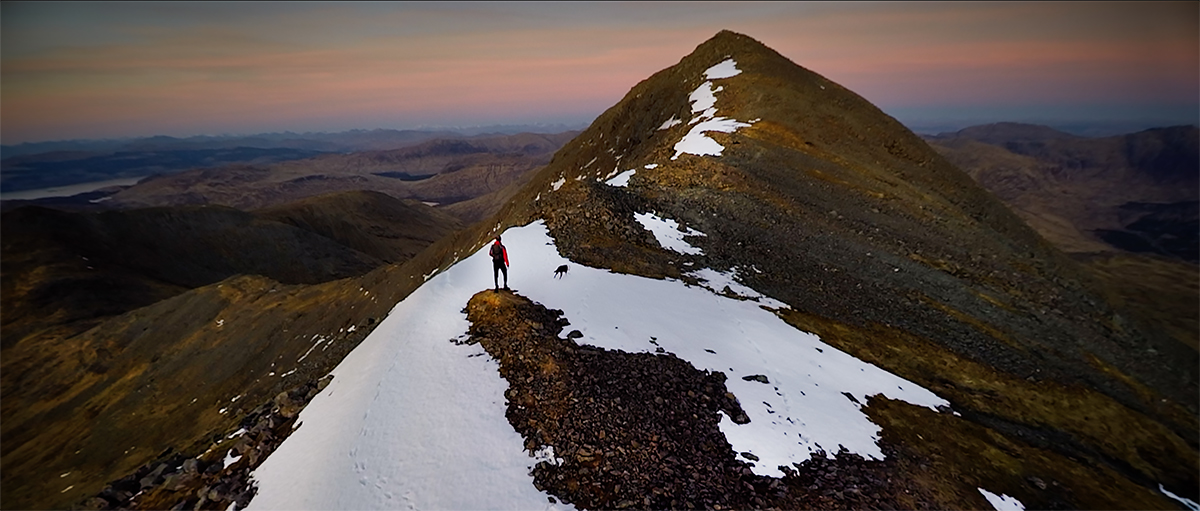50 Great Things to Do on the Isle of Mull
The Isle of Mull is one of the easiest islands to reach in the Hebrides, with regular ferries arriving on the island from Oban, Kilchoan and Lochaline on the Scottish mainland. It’s also one of the most exciting to explore, with mountain glens, shell-sand beaches and the vibrant town of Tobermory all to be enjoyed. We’re here to help get you started with 50 of the best things to do on the Isle of Mull. Off we go!

Wildlife
- Encounter the white-tailed sea eagles
Explore the coastline for a lucky glimpse as eagles visit their feeding grounds, or book a guided tour with a ranger at Mull Eagle Watch. - Scan the shoreline for otters
These often-elusive creatures could test your patience, but when it pays off, the chance to see otters in the wild is well worth the wait. - Watch golden eagles soar over the hills
The more mountainous parts of the island, like dramatic Glen More, are a good place to look. - Look out for deer
A regular sight, red deer outnumber people on the Isle of Mull by three to one! Fallow deer can also be found in a few parts of the island. - Take a wildlife tour
A brilliant way to begin the week, giving you plenty of tips and places to visit during the rest of your holiday. - Meet the puffins on the Treshnish Isles
From April to July, land on Lunga to experience these ground-nesting birds close up. Boat trips depart from Tobermory and Ulva Ferry. - Go whale watching off Mull’s north coast
With the chance to see minke whales in the waters around Mull, this boat trip is a must. You could also spot basking sharks and harbour porpoise, too. - Spot dolphins from a boat trip to Staffa
It’s not uncommon for a playful pod of dolphins to accompany your boat as it sails towards Staffa and Fingal’s Cave. - Look for the corncake on Iona
There are around 40 pairs of nesting corncrake on the Isle of Iona, reached via passenger ferry from Fionnphort on Mull. - Visit the aquarium
Pay a visit to Tobermory’s catch-and-release aquarium located in the harbour building at the end of the colourful Main Street.

Walking
- Walk to Carsaig Arches
One of the most ambitious walks on the island, cross challenging terrain to reach one of Mull’s greatest natural spectacles. - Hike to MacCulloch’s Fossil Tree
A brilliant walk through true wilderness with excellent sea views to accompany you. The Tiroran holiday cottages make an excellent base for this hike. - Trek from coast to coast
Start from the old fishing boats at Salen and traverse the narrowest part of the island to reach the coast of Loch na Keal at Killiechronan. - Climb Ben More
Take the popular path from Dhiseig or tackle the more challenging A’Chioch ridge ascent. - Walk to the tidal isle of Erraid
Low tide exposes a tidal sandbar you can cross to Erraid from Knockvologan beach. Be sure to check tide times for your return journey to ensure you’re not cut off! - Explore the ruined village at Shiaba
Starting from Scoor in south west Mull, navigate the island’s coastal hilltops to reach Shiaba, with superb views out to sea. - Take a guided wildlife walk
Taking things at a slower pace can make it easier to spot Mull’s more elusive wildlife, with experienced guides to help. - Climb Dun da Gaoithe
A dramatic mountain to climb with views that stretch over the sea to the mountains of mainland Scotland. - Stretch your legs at Aros Park
Follow the crashing course of the dramatic waterfalls, take a tranquil walk around the lochan or follow the coastal path back to Tobermory. - Walk to a hidden beach
Head off the beaten track and discover the Isle of Mull’s many remarkable beaches that you can’t see from the roadside.

History & Geology
- Explore the Mull Museum in Tobermory
From the island’s volcanic origins to its crofting roots, step back in time at the Mull Museum. - Visit the Abbey on Iona
A short passenger ferry crossing carries you from Fionnphort in south west Mull to the idyllic Isle of Iona. - Explore the disused pink granite quarry at Fionnphort
The pink granite rock is a distinctive feature on the Ross of Mull, with a lovely circular walk offering a glimpse at how the rock was once mined. - Visit the Ross of Mull Historical Centre
Discover the crofting traditions and challenging times of life on the Ross with exhibits, and pick up a guide book for the rest of your stay. - Walk around the fossil beds at Ardtun
A coastal walk with the chance to see columnar basalt and leaf fossils, revealing trees that once stood beside a prehistoric lake. - Visit the Macquarie Mausoleum
Take this gentle walk from Gruline to the Macquarie Mausoleum, which commemorates Sir Lachlan Macquarie who came from Ulva and became Governor of New South Wales. - Walk to ruined castles at Aros and Lochbuie
Visit the ruins on the headland at Aros, just north of Salen Bay, or follow the south coast from Lochbuie to discover Moy Castle.
- Visit the Iron Age fort at Aros
While you’re in the area, head uphill to the top of Cnoc na Sroine to see the remains of the Iron Age fort. - Climb up to crater loch
Experience Mull’s volcanic past feet first with a climb to the top of the crater loch, Lochan S’Airde Beinn. - Step back in time at Duart Castle
Spot the impressive seat of Clan Maclean from the ferry into Craignure, then pay the castle a visit for a tour.
Outdoor & Adventure
- Go kayaking along the coast
You can even launch your kayak from the cottage when you stay at Seaview or The Old Church. - Wild swim in Calgary Bay
Discover more wild swimming spots around the island with our guide. - Visit Eas Fors waterfall
This multi-tiered waterfall tumbles down the hillside and into the sea on the island’s west coast. - Drive through the Glen More mountains
Pull in at the Three Lochs viewpoint for an incredibly scenic picnic spot. - Walk to the most north easterly point on Mull
This less-travelled walk takes you to Ardmore Point. - Visit MacKinnon’s Cave
Remember to check the tide times and pack a torch – the cave is bigger than you think! - Witness the Dakota memorial
Walk deep into the heart of Glen Forsa and you’ll pass the memorial to the 1945 Dakota plane crash. - Go mountain biking
There’s no shortage of biking trails on the island, passing through woodland, mountain and coast. - Play golf beside the sea
There is not one but two golf courses on the Isle of Mull – a nine-hole course with views to Ardnamurchan in Tobermory, and a course in Craignure with sea views across to the Morvern hills. - Go sea or river fishing
Pick up a permit for river fishing from Tackle and Books and make your own catch of the day.

Family
- Visit Rainydays soft play in Tobermory
A great way to entertain the little ones if the weather is wild outside. - Walk the Calgary Art in Nature trail
Think of it like an artistic treasure hunt that leads down to the white sand beach. - Visit the gardens at Lip na Cloiche
Discover driftwood creations, wander through lush, jungle-like planting and enjoy the sea views from this magical garden. - See a play at Mull Theatre
Conveniently located just outside Tobermory, this makes a great addition to your holiday. - Go pony trekking along the beach
Ride through the waves and canter across the beach on surefooted Highland ponies. - Make a splash in the pool
The swimming pool at the Isle of Mull Hotel in Craignure is great for a swim whatever the weather. - Experience the Tobermory Highland Games
A day of bagpipes and competition, this traditional Highland fixture held each July is not one to be missed! - Build sandcastles on Knockvologan beach
One of the most beautiful beaches on the Isle of Mull with gorgeous sandy bays. This one is well worth a visit! - Attend a country show at Salen or Bunessan
See the Isle of Mull’s farmers and crofters turn out in their droves as their livestock compete in the show ring. Find out what’s on. - Visit the shipwrecks at Salen
One of the most iconic locations on Mull, don’t miss a visit to Salen’s old fishing boats as you venture up the east coast.
Feeling inspired to visit the Isle of Mull? Book a holiday cottage and get your holiday plans underway!




